A special thank you to Judy Wellman, Paul Malo's dear wife and special partner in life. Judy found this article that Paul wrote shortly before he died in July 2008. We are fortunate to have this piece as a reminder of Paul's appreciation for those who love the Thousand Islands. (S.W. Smith editor)
Collectors of Viva Hoffmann’s work are a rarified group these days, when her work is rarely shown or seen—although she continues to paint. I had no idea that one of the area’s fine builders, Steve Taylor, was a connoisseur of painting, but was visiting his office on business, when I turned around and practically was bowled over: on a wall hung a huge canvas, gripping in its intensity and vigor. “What is this?” I asked incredulously, learning to my surprise that it was a river landscape by Viva Hoffmann. I learned that many of her paintings have been collected in the area and with Steve’s and Viva’s help we were able to locate several fine examples.
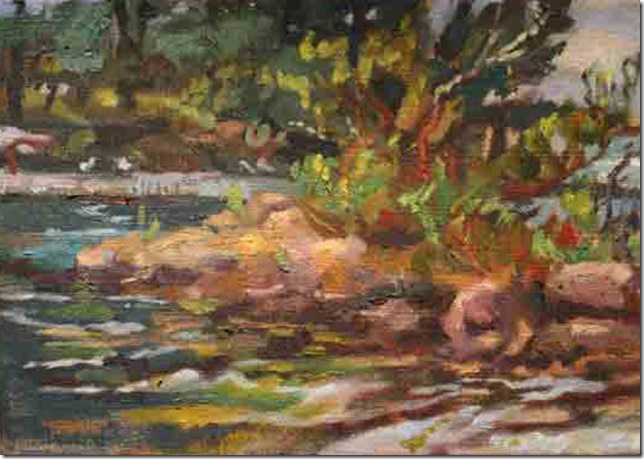
Pine Island & Muskrat, © Viva Hoffmann
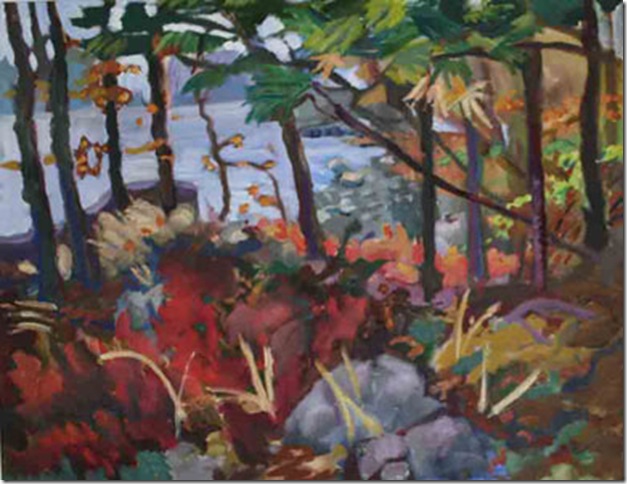
Swiftwater Point © Viva Hoffmann
Although we have had many fine painters on the river, my instant reaction: “Here is the best painter the region has ever seen, doing landscapes of our favored place, and no one is aware that this is happening.” I resolved then and there to correct this unfortunate situation, thinking initially of a show, but we have few galleries large enough (or perhaps sufficiently sophisticated) for this purpose. Viva represents the New York School of Abstract Expressionists, a movement that waned when supplanted by (ironically) Andy Warhol and his school of pop art, although Viva was a member of the Warhol “factory.”
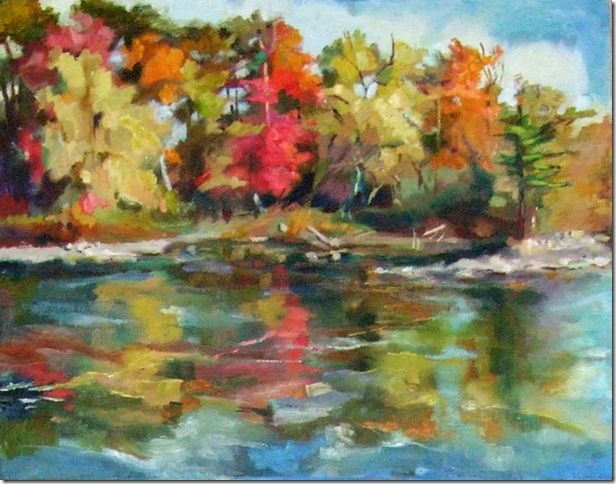
Snake Island (#2) © Viva Hoffmann
I suppose I was primed to be receptive, since I had worked with painters at Syracuse University, had collected abstract expressionist paintings myself and was familiar with abstract expressionism—familiar and sympathetic. We painting buffs had long discussions about painting trends, and intense discussions of Harold Rosenberg’s and Clement Greenberg’s nuanced critical essays about the New York scene. Viva was not really part of that scene at the time; she had not yet been taken in by Andy Warhol. And recognition on the New York scene required patronage of some dealer or other prominent figure of the hour. Perhaps the painter closest to Viva and her work was Helen Frankenthaler, whose dynamic “action paintings” were much discussed in the aspect of gender—was it “feminine” for young women to be wielding such large brushes, slathering paint on such large canvases? At the time, some critics thought that women’s paintings should look demure.
Viva certainly is not demure, and had her paintings been more visible back in the 1980s, her star might have risen along with Helen Frankenthaler’s.
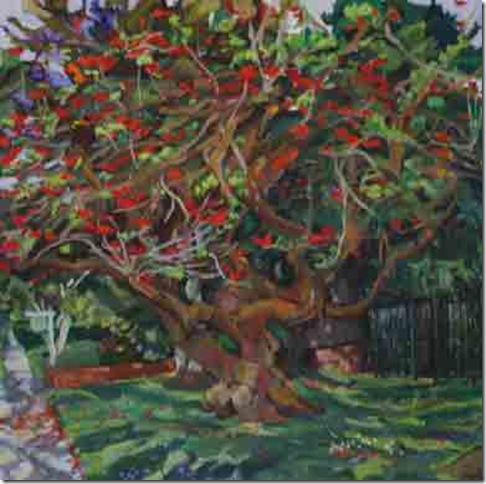
Flame Tree – Santa Monica © Viva Hoffmann
Since the New York School is now, alas, history, here is a good capsule definition of “abstract expressionism”:
A painting movement in which artists typically applied paint rapidly, and with force to their huge canvases in an effort to show feelings and emotions, painting gesturally, non-geometrically, sometimes applying paint with large brushes, sometimes dripping or even throwing it onto canvas. Their work is characterized by a strong dependence on what appears to be accident and chance, but which is actually highly planned. Some Abstract Expressionist artists were concerned with adopting a peaceful and mystical approach to a purely abstract image. Usually there was no effort to represent subject matter. Not all work was abstract, nor was all work expressive, but it was generally believed that the spontaneity of the artists' approach to their work would draw from and release the creativity of their unconscious minds. The expressive method of painting was often considered as important as the painting itself. http://www.artlex.com/ArtLex/a/abstractexpr.html
Indeed, this sort of painting is “expressive” or it is nothing. The intent is to ‘freeze” a moment on canvas—and certainly this is “impressionist” in intent. Put another way, the concern is less to portray some subject but more to portray the process of painting itself. Painterly improvisation recalls jazz. Decisions must be split-second—going back and reworking would flaw the sponteous honesty of the expression.
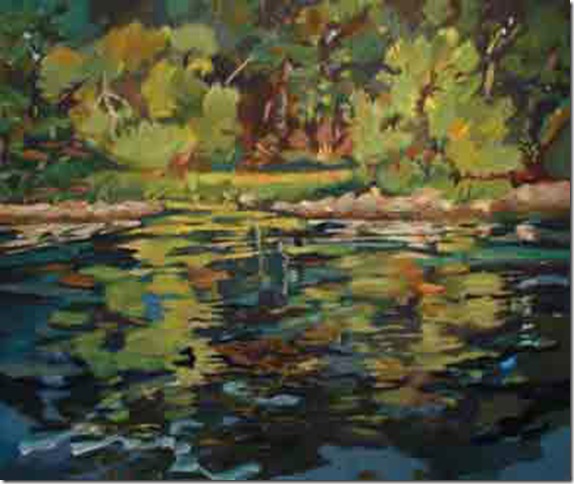
Two Willows© Viva Hoffmann
Here is another good, short definition of “action painting”
In Action Painting the canvas is the arena in which the artist acts. The action of painting becomes a moment in the biography of the artist -- the canvas becomes the index (record) of the event.
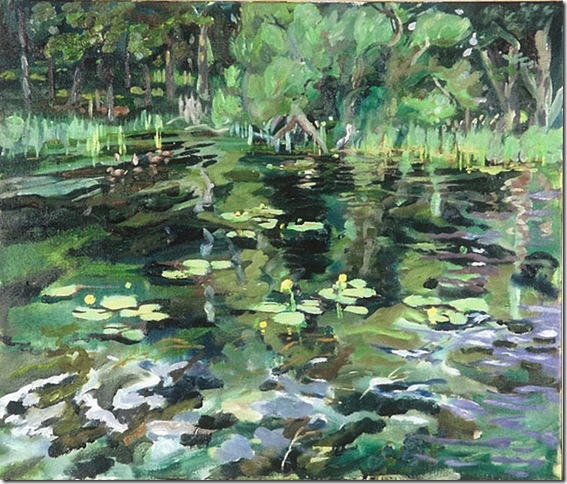
Water Lilies © Viva Hoffmann
This may sound esoteric, but is really no more so than thinking of recording a session of jazz improvisation, which is the record of an event. Much of the value inherits less in the form of the product as a musical number than that in the intensity and vigor of the process—whether it rises to the level of attaining it’s singular “groove.”
Viva usually finds her groove—and it may not be too cute to call the work “groovy.” It is improvisational, and jazzy.
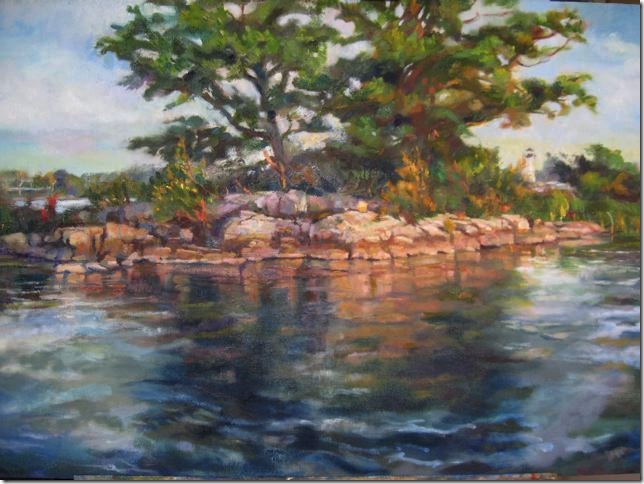
Goose Island © Viva Hoffmann
“Goose Island” a painting from late last summer: Look at that water! It’s musical, and “painterly.” It’s been said that there are two kinds of painters, the draftsman-like and and the painterly. The late Hans Junga was draftsman-like (as is Michael Ringer) whereas Viva is a “broad brush” painter who attacks the canvas directly. No blocking out the composition with a pencil drawing for her. No reworking. Make the mark and let it stand. Live with it—let the next mark relate to it—this is improvisational painting.
Viva is essentially an impressionist painter, working in the landscape tradition of Monet. Similarly she paints in plein aire (open air, outdoors, not in the studio from sketches or photographs),; she is inspired not merely by the visual scene, but by the whole environmental quality—breeze, smell, the total river ambiance, which she tries to capture.
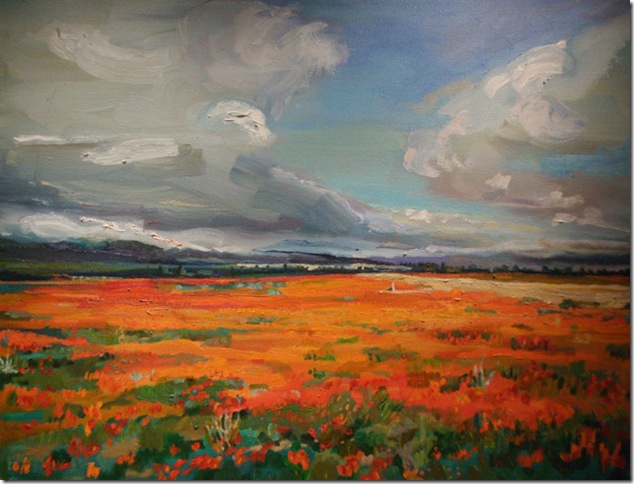
Poppies © Viva Hoffmann
The “action painting” approach assures a liveliness to the image, which really records “action”. The picture is not a rendering of something, like a typical Ringer canvas—where the intent seems more to record a scene with realism. Rather, Viva’s paintings seem alive, pulsating with her jazzy brush strokes. They are not mere pictures of attractive subjects—they are live music.
For further reference see:
http://en.wikipedia.org/wiki/Gaby_Hoffmann
http://www.myspace.com/vivahoffmann